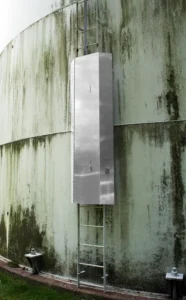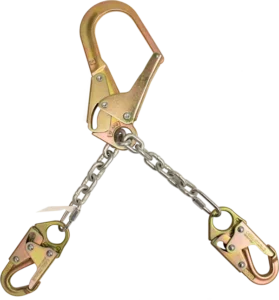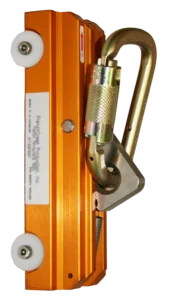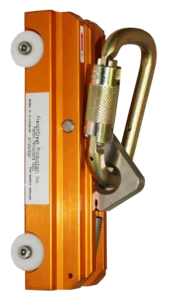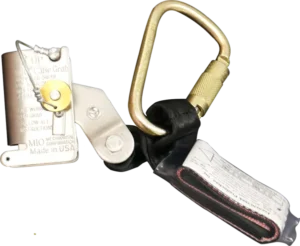Your cart is currently empty!

Protect Workers with a Reliable Ladder Safety System
A ladder safety system is essential for protecting workers at height, helping prevent falls and meet OSHA requirements. Whether in construction, utilities, or maintenance, teams rely on ladders daily—making proper fall protection critical. The right system not only reduces injuries but also boosts confidence and keeps your operation running smoothly.
Ladder Safety from the Experts in Fall Protection
At FrenchCreek Fall Safety, we take immense pride in offering ladder safety systems that not only meet but also exceed the latest OSHA requirements for fixed ladders. Our ladder fall protection systems provide the highest level of safety for your workforce. With easy installation procedures, you can implement these systems throughout your facility, enabling your employees to work at heights without unnecessary delays or complications.
WHY ARE LADDER SAFETY SYSTEMS NOW REQUIRED?
Ladder safety regulations have evolved to better protect workers from falls, one of the leading causes of workplace injuries and fatalities. Under OSHA standard 1910.28(b)(9)(i), new requirements have been established for fixed ladders that are 24 feet or taller, ensuring they are equipped with personal fall protection systems.
Key Compliance Deadlines:
- New Ladders (Installed After November 19, 2018): Any fixed ladder erected after this date must include either a ladder safety system or a personal fall arrest system to prevent falls.
- Existing Ladders (Erected Before November 19, 2018): Employers have until November 18, 2036, to bring older fixed ladders into compliance by installing appropriate fall protection.
- Repairs & Replacements: If any section of a fixed ladder is replaced, the new portion must include a ladder safety system to meet OSHA requirements.
- Final Deadline (November 18, 2036): By this date, all fixed ladders must be retrofitted with a ladder safety or personal fall arrest system. After this phase-out period, cages alone will no longer be considered compliant.
What About Ladder Cages?
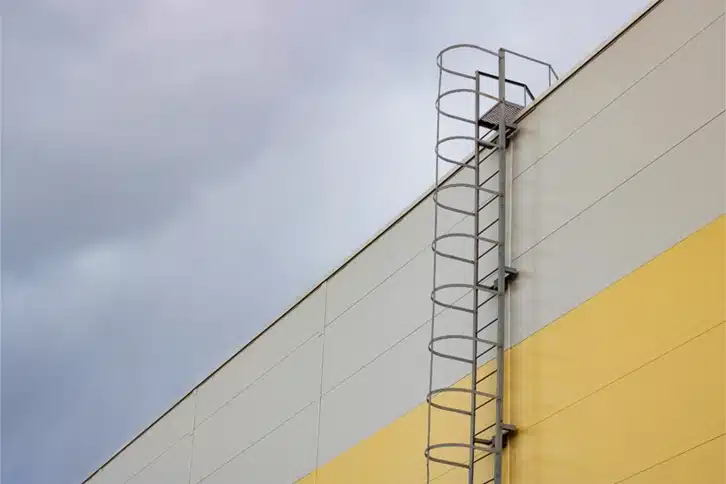
OSHA does not require the immediate removal of ladder cages. However, after the final compliance deadline in 2036, relying solely on ladder cages will no longer meet safety regulations. To avoid OSHA violations, all fixed ladders must incorporate an approved ladder safety or fall arrest system by then.
These updates are designed to create a safer working environment, reduce fall risks, and ensure compliance with the latest workplace safety standards. Employers should start planning now to upgrade their ladder systems and stay ahead of regulatory deadlines.
What types of Ladder Systems DOES FRENCHCREEK OFFER?
Ladder safety systems come in various forms to meet the unique needs of different industries and job sites’. FrenchCreek Fall Safety specializes in fixed and vertical ladder systems, providing durable and reliable solutions for industries requiring dependable fall protection. At FrenchCreek, we offer the following systems:
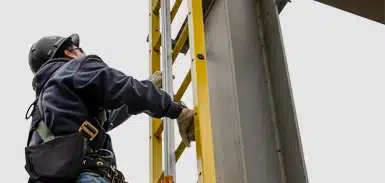
Rigid Rail Ladder Safety System
Consists of a durable, fixed track system that minimizes fall distance and swing hazards, making it ideal for environments like manufacturing, transportation, and maintenance facilities.
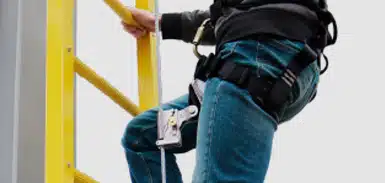
Cable Ladder Safety Systems
Features a durable stainless steel or galvanized steel cable that runs along the ladder, allowing workers to connect via a cable shuttle for a safe and secure climb.
Key Benefits of Ladder Safety Systems
Ladder safety systems offer numerous advantages that protect workers, improve efficiency, and ensure compliance with industry standards. Here are some of the key benefits:

Preventing Falls and Accidents
Reliable fall arrest systems minimize the risk of injuries and fatalities, ensuring a safer workplace.
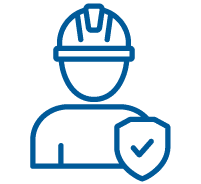
Enhancing Worker Safety and Confidence
Workers feel secure knowing they are protected, which improves focus, productivity, and morale.

Compliance with OSHA Standards
Ladder safety systems help businesses meet OSHA’s strict requirements, avoiding costly fines and ensuring adherence to safety regulations. These ladder systems meet OSHA’s newest standards for fixed ladders over 24’ tall.

Cost-Effectiveness and Long-Term Benefits
Investing in safety systems reduces workplace accidents, downtime, and insurance claims, making them a smart, long-term solution for any organization.
Do I Need a Rail or Cable Ladder System?
Choosing between a rail and cable ladder safety system depends on your specific workplace needs, but it’s important to understand the advantages and limitations of each option. While both systems are effective for fall protection, rail systems often provide superior durability, ease of use, and long-term performance in many applications. To determine which system is best for your facility, check out our detailed comparison of rail and cable systems.
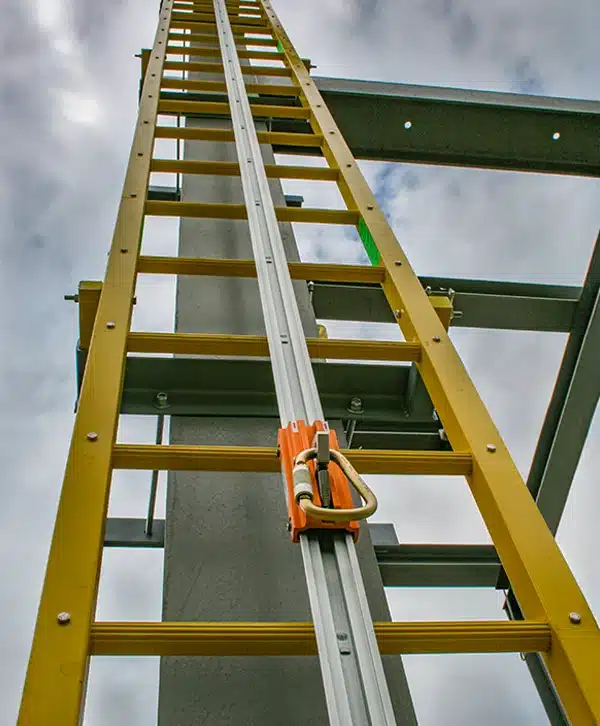
RAIL LADDER SYSTEMS
Rail ladder systems consist of rigid rails installed along the ladder, offering a secure connection point for workers climbing at height. These systems are known for their strength and reliability, making them a popular choice in demanding industrial settings. Rail systems are ideal for facilities that require frequent use of fixed ladders, including manufacturing plants, construction sites, industrial complexes, and the wastewater industry.
- Exceptional durability and long lifespan, even in harsh environments.
- Smooth operation with fewer moving parts, reducing maintenance requirements.
- Ideal for ladders that have multiple offsets and standoffs, such as tanks and towers.
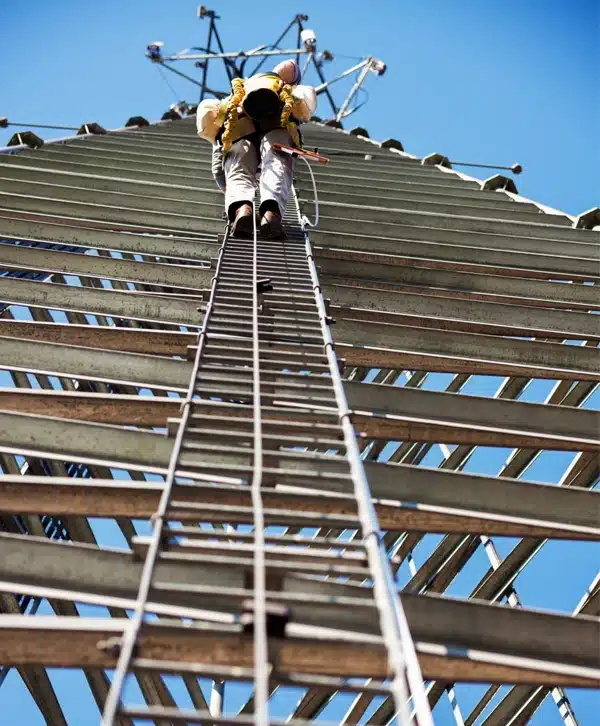
cable ladder systems
Cable ladder systems use flexible, tensioned cables as the connection point for workers. While effective for fall protection, these systems are better suited for specific use cases and environments. Cable systems are suitable for environments with moderate ladder usage or where cost savings are a priority, such as smaller facilities or temporary installations.
- Ideal for tall, single span ladders.
- Lightweight and easier to install in non-standard ladder configurations.
- Provides sufficient protection for less frequent ladder use.
- Not able to used in Potable Water.
- Not able to be used with a hatch.
HOW DO I Order MY CABLE LADDER SYSTEM?
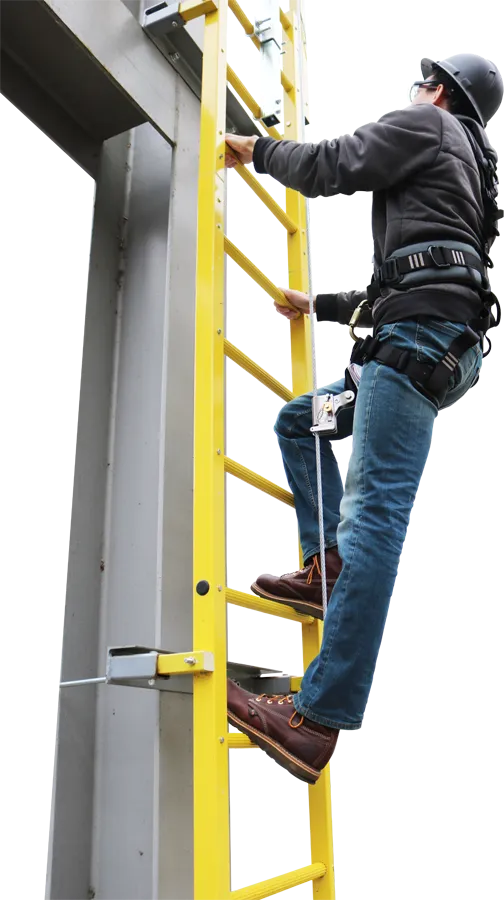
Designing a cable ladder system is simpler than you might think!
The most important step is measuring your ladder to ensure the system fits securely and provides the necessary fall protection. Accurate measurements will allow you to choose a cable system that accommodates your ladder’s height, structure, and usage requirements.
FrenchCreek Fall Safety offers a variety of cable ladder systems designed to provide reliable fall protection for different ladder configurations.
Request a quote for the following systems.
HOW DO I CONFIGURE MY RAIL LADDER SYSTEM?
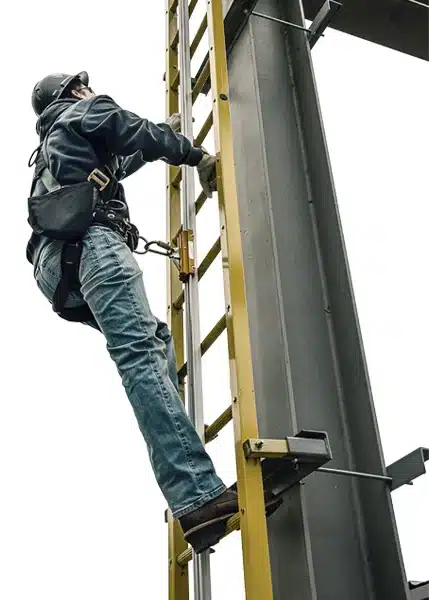
Designing a rail ladder system requires careful planning and precise measurements to ensure optimal safety and compliance.
While the process may seem complex, it can be broken down into manageable steps, allowing you to create a custom system tailored to your ladder’s specifications.
Let’s break down the essentials for creating a reliable rail ladder system!

How do I measure my ladder and rung spacing for a rail ladder system?
Accurate measurements are the foundation of a safe and effective rail ladder system. Start by measuring the overall length of your ladder, beginning from the ground or platform up to the top of the ladder. FrenchCreek recommends starting the rail approximately three feet from the bottom of the ladder to ensure smooth entry and exit. For example, a 40’ ladder would require only 37’ of rail.
Next, measure the rung spacing—the distance from the bottom of one rung to the bottom of the rung directly above it. Rung spacing helps us determine the correct number and placement of rung clamps for your system. While most standard ladders have 12″ center-to-center rung spacing, some exceptions exist.

what material should i choose for my rail ladder system?
The material you choose for your rail ladder system significantly impacts its durability, performance, and suitability for your work environment. Here’s a breakdown of the three common materials:
- Anodized Aluminum: Our most popular option, the anodized coating provides a harder surface that is resistant to scratches and corrosion. This option is ideal for high-traffic areas or environments exposed to wear and tear.
- Stainless Steel: Stainless steel rails are resistant to rust and corrosion, making them perfect for outdoor or wet environments. The stainless steel option is especially suited for potable water applications due to the corrosive nature of that environment.
- Non-Anodized Aluminum: This option is lightweight, affordable, and suitable for general use. If you plan to weld the rail to your fixed ladder, you will need non-anodized aluminum rail.

What rung shape DO I NEED for my rail ladder system?
Ladders come in a variety of rung shapes, and selecting the correct clamps to match your rung shape is essential for system compatibility. Common rung shapes include:
- Round: The most traditional and widely used shape, ideal for general applications where simplicity and ease of use are key.
- Square: Offers a larger surface area for secure footing, making it a safer option for environments where stability is crucial.
- Diamond or Angle Iron: Typically found in specialized industrial ladders, these shapes are chosen for their durability and ability to support heavy-duty tasks.
- Half-Round: A combination shape that provides a balance of comfort and functionality, suitable for unique or custom applications.
- Custom: Non-standard ladder rungs exist in some applications. Please provide FrenchCreek with these unique dimensions so we can ensure the proper clamp fit for your system.
By identifying your ladder’s rung shape and size, you can ensure your rail system fits securely and operates as intended.

What accessories/add-ons do I need for my rail ladder system?
Enhancing your rail ladder system with the right accessories improves safety and functionality. Here are a few key add-ons to consider:
- Trolleys: Connect to the worker’s harness and travel smoothly along the rail. They lock in place in the event of a fall, ensuring maximum protection. Available for both aluminum and stainless steel systems.
- Stop Bolts: Installed at the top and bottom of the ladder to prevent the trolley from unintentionally leaving the rail.
- Extensions: Allow safe access to platforms, tanks, or manholes with hatches. Extensions are available in aluminum and stainless steel.
- Anchorage: Anchor posts or D-bolt anchors provide secure tie-off points for the rail system, ensuring stability in various work environments.
- First-Man Up Pole: A remote tie-off tool that allows workers to attach to an overhead anchorage point before climbing, providing added security from the start.
These components, when properly selected and installed, create a comprehensive rail ladder system that meets safety standards and provides peace of mind for your team.
What Harnesses, Lanyards, and SRLs work for cable and rail ladder systems?
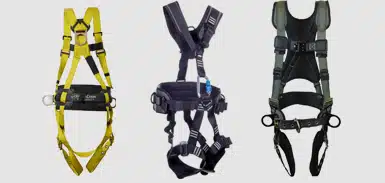
HARNESSES
When connecting to a ladder system, FrenchCreek strongly recommends using a waist D-ring for optimal mobility, allowing the trolley to move freely up and down the system. The following harnesses come equipped with waist D-rings:
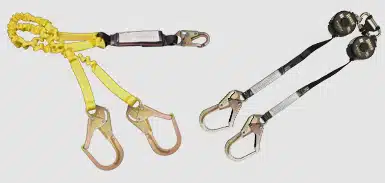
LANYARDS & SRLS
A lanyard or personal SRL can be a valuable tool when transitioning off the top of the ladder. Below are the options recommended by FrenchCreek:
What Accessories ARE AVAILABLE for my Cable or Rail Ladder System?
Related Resources

FrenchCreek Fall Safety Unveils Cutting-Edge Fall Protection Solutions in 2024 Catalog
FrenchCreek Fall Safety, a trusted name in the realm of safety equipment, proudly announces the release of its highly anticipated 2024 Fall Protection
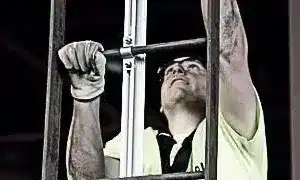
Ladder Safety Systems: Rail vs. Cable – Which One Should You Choose?
In the world of General Industry, where our top priority is ensuring the safety of both our hardworking employees and the valuable equipment they use, you can count on FrenchCreek Fall Safety
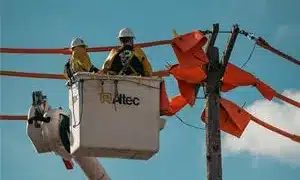
The Ultimate Guide to Fall Protection in Aerial Lifts!
When it comes to working at heights, ensuring proper fall protection is crucial for the safety of workers. Whether you’re operating an aerial lift or a scissor lift, understanding the fall protection requirements is
DESIGN YOUR RAIL LADDER SYSTEM
Our rail ladder safety systems are custom-built to fit your ladder, requiring specific dimensions for an accurate quote. If you need assistance with measurements, you may submit the form with only your contact information, and a FrenchCreek representative will follow up to assist you. For immediate support, please contact our customer service team at 877.228.9327.

